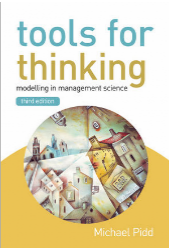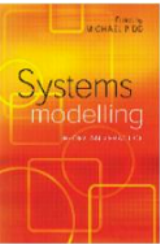

Systems modelling in complex problems
Complexity?
There are many definitions of complexity. Some see complexity as a property of an external system that is large, complicated, highly inter-connected and unpredictable. Others see complexity as a property ascribed to the system by an observer who may also be a participant in the system. My own work is concerned with complex systems made up of entities that include humans. Many business processes can be viewed as such complex, human activity systems and to analyse these and improve them, we need methods than involve both soft and hard approaches.
Systems modelling to cope with complexity
How can we cope with complexity? A central tenet of my own discipline (Operational Research or Management Science) is that we can build and use models of complex systems to help us understand them, so we can plan and make better decisions. A model is always a simplified representation that can never include every aspect of the system being modelled. However, when a system model is combined with intelligent thinking, this provides a powerful approach to coping with complexity,
Tools for thinking: modelling in management science (3rd edition)
This is a text, which first appeared in 1996, that I produced to support students and others who wished to know more about how to build and use systems models to cope with complexity. It has four parts:
1. Modelling in management science. An overview of some of the basic ideas of building and using models as tools for thinking about decision making in complex systems. This is wholly non-technical.
2. Interpretive modelling - soft management science. This introduces the ideas of sosft systems methodology, cognitive mapping, soft system dynamics and decision analysis.
3. Mathematical and logical modelling. Which introduces linear programming, visual interactive modelling & monte-carlo simulation and heuristic search.
4. Model assessment and validation. How to increase confidence that a model is valid and fit for purpose.
Systems modelling: theory and practice
I edited this book as a result of running the INCISM EPSRC-funded network, which looked at the complementary use of hard and soft methods in Operational Research. It includes contributions from thoughtful practitioners and from leading academics including Peter Checkland, Colin Eden, Fran Ackerman.
The full details of the two books are as follows:
Pidd M. (2009) Tools for thinking: modelling in management science. (3rd edition) John Wiley, Chichester.
Pidd M. (2004) (Ed) Systems modelling: theory and practice. John Wiley, Chichester.
Both can be obtained from John Wiley or from your usual bookstore.



